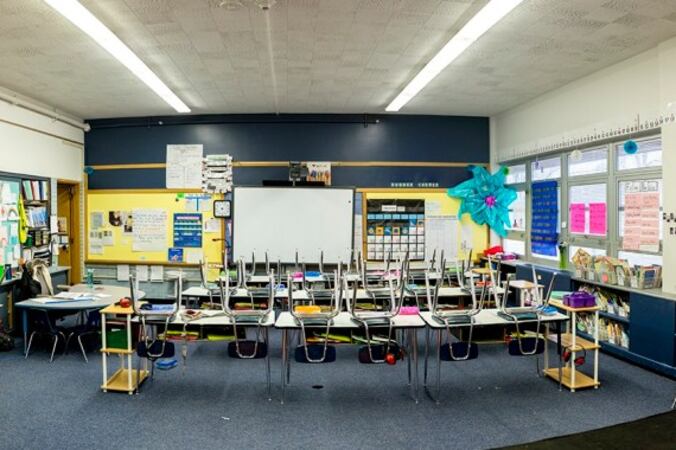More than 60% of Denver school principals don’t think elementary schools should have fully reopened this week while COVID-19 cases are rising, according to a principals union survey.
Initial results from a separate survey conducted by the Denver teachers union show 79% of respondents believe it is unsafe for elementary schools to be open for in-person learning, according to Denver Classroom Teachers Association President Tiffany Choi.
“What we said during the strike a lot was we can’t put students first if we’re putting teachers — and principals — last,” Choi said Friday, referencing a teachers strike in February 2019 for higher pay. “It feels like that is what’s happening. In our attempt to serve students, we’re ignoring the voices of teachers and principals.”
Denver Public Schools has been gradually reopening elementary schools this fall, starting with preschool in September and culminating on Wednesday when students in grades two through five began attending in-person classes for the first time since March.
Middle and high school students were supposed to return this week as well, but district leaders changed course in light of rising COVID cases citywide. Secondary students are now slated to return to school buildings on Nov. 9 at the earliest. Several suburban districts have also moved some or all of their students back online in response to rising numbers of cases.
Superintendent Susana Cordova has said Denver is following advice from public health doctors, who have emphasized that COVID cases remain low among elementary school-aged children. Cordova has also repeatedly said it’s harder for young children to learn online and therefore more crucial for them to return to classrooms.
Information from school openings around the United States suggests that elementary schools can operate relatively safely, but experts caution there is still a lot we don’t know.
“We know that young children are at a significantly lower incident rate with COVID,” Cordova said Thursday. “They’re less often diagnosed. They appear to transmit COVID less than adolescents and adults. They have fewer symptoms.”
While the health risks of in-person learning may be relatively low for young children, teachers and principals say that reasoning ignores the reality that adults, who are more likely to get ill from COVID, must risk their own health to reopen classrooms.
“Schools are important,” said Cesar Rivera, principal at Samuels Elementary and co-president of the Denver School Leaders Association, who noted that schools serve as a safety net for many children. “But my goodness, when we are risking the lives of our staff to satisfy a gaping need — so many gaping needs in society — that puts us in a precarious place.”
Fourth grade teacher Julie Pollack pleaded with the school board Thursday to protect teachers.
“You can’t predict how someone will react to the virus,” Pollack said. “Will I be lucky and be asymptomatic? Will I end up on a ventilator?”
Meanwhile, several parents asked the board to reopen middle and high school buildings. Districtwide, about two-thirds of families have opted for in-person learning this quarter, though there are disparities by student age, race, and neighborhood.
The teachers and principals unions have been pushing the district to establish thresholds for when it’s safe to be in person — and when it’s not. The district doesn’t currently have such cutoffs. Instead, it is publicly tracking several metrics related to COVID cases in the broader community, as well as the number of students and teachers who’ve tested positive.
On Friday, one of the district’s three “stoplight metrics,” which track case trends in the city of Denver, was red. Two were yellow. In addition, 63 school district staff members and 87 students had tested positive for COVID-19. The city issued new public health orders last week in an attempt to slow the spread of the coronavirus, but it’s too soon to say whether they’re working.
The unions would like the district to set a threshold — for instance, that school buildings would not reopen if positive cases were above a certain percentage. But district leaders have shied away from such bright lines, preferring to confer with public health officials on decisions.
That causes stress for educators, union leaders said. “When there’s a level of uncertainty out there,” Rivera said, “that heightens the level of anxiety and fear.”







